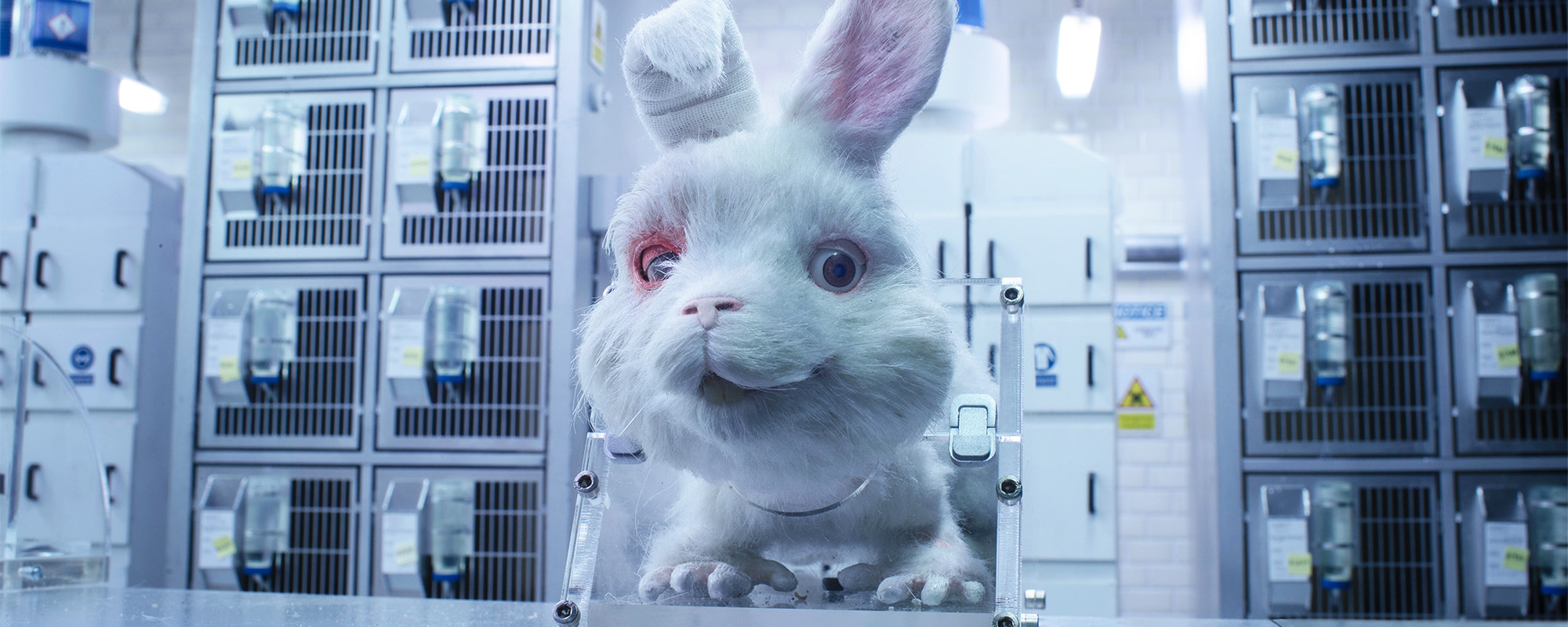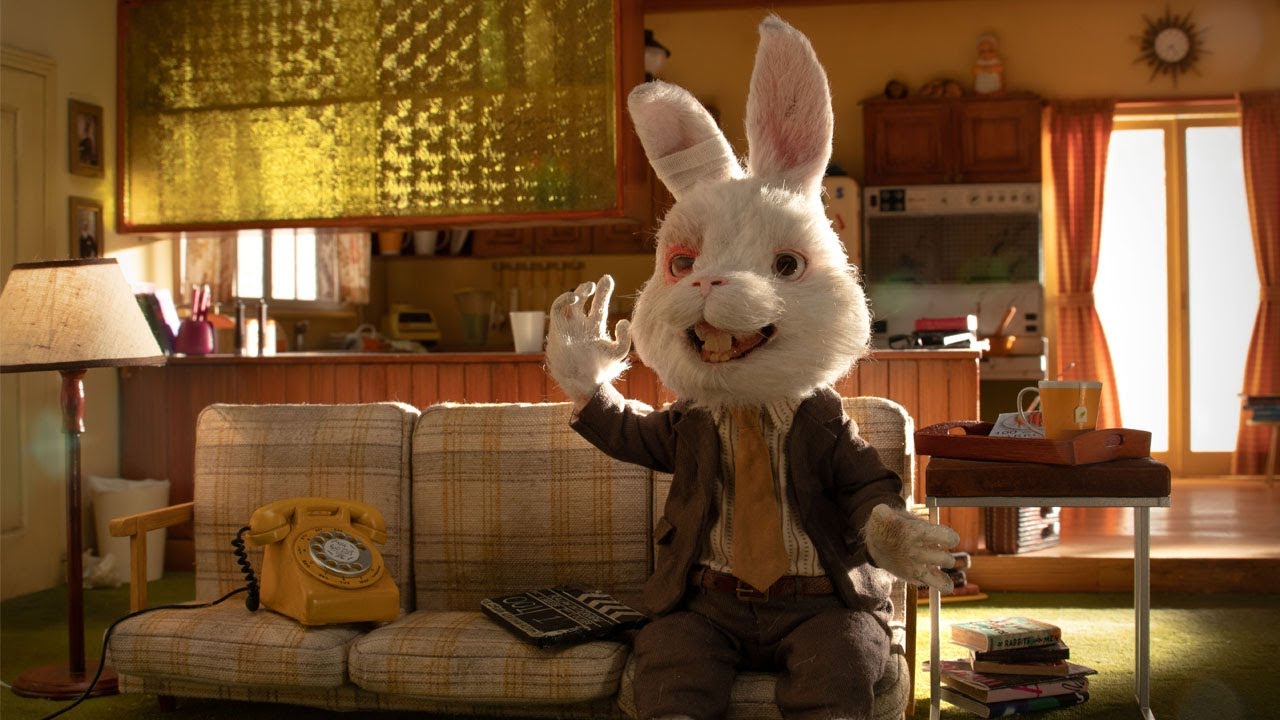The Team
Spencer Susser (Writer, Director), Tobias Fouracre (Award-winning Animator), Jeff Vespa (Producer), Andy Gent (Puppet Maker & Set Designer), Donna Gadomski (Executive Producer and leader of impact campaign)
Spencer Susser (Writer, Director), Tobias Fouracre (Award-winning Animator), Jeff Vespa (Producer), Andy Gent (Puppet Maker & Set Designer), Donna Gadomski (Executive Producer and leader of impact campaign)
“Save Ralph” is a short stop motion animation released by the Humane Society International as part of their campaign to end animal testing in the cosmetics industry. It is written and directed by Spencer Susser. Donna Gadomski is the executive producer of the film and led its impact campaign. The film follows the protagonist, Ralph, a tester rabbit working for a cosmetic company. Throughout the film, his health progressively deteriorates as a result of being exposed to harmful chemicals. Various high-profile actors serve as voice actors in the film, which helped raise the film’s profile and increased its reach around the world. The film has been watched hundreds of millions of times since its release less than two years ago and has become a cultural phenomenon across various social media platforms. The original filmmaking team released the film in five different languages and subtitled it in another ten languages. However, various social media users have started a bottom-up effort to dub the original films into even more languages. The impact campaign set out to ban cosmetic testing in 16 countries that collectively made up 50% of the cosmetic market at the time of the film’s premiere. Within months of its release, the film was a catalyst for legislative actions across multiple countries, and ultimately Mexico banned cosmetic testing altogether.
“Save Ralph” can be classified as a dystopian satire. Throughout the film, Ralph takes the audience through his day in a calm and matter-of-fact way. He accepts his abominable working conditions as normal because that is all he and his family have ever known. This, juxtaposed with the shockingly cruel things that happen to him, creates a disconcerting dissonance that alerts the audience to the unjust practices involved in animal testing. There is no music score, only Ralph’s voice and background sound effects, which add a chilling and sobering effect to the tone of the film.
The film uses a mockumentary style to tell Ralph’s story. Beyond the use of satire, the film is enhanced by the filmmakers’ choice to anthropomorphize Ralph. It begins with Ralph looking into the camera and directly addressing the audience as he introduces himself. Then, the camera continues to follow Ralph throughout the day. This footage is supported by Ralph’s matter-of-fact commentary. His house looks like a typical middle-class home. He starts his day by brushing his teeth and eating sugary cereal. While eating, he talks about how he follows in his family’s footsteps, as they were also tester rabbits. That is, he has a story that is relatable to a lot of people in society. By this point, the audience is emotionally invested in Ralph’s story and feel connected to him. Despite this seemingly ordinary story, details like his damaged eye and bandaged ear foreshadow the more graphic scenes that follow. Here, the serene breakfast scene is interrupted by a human hand that literally breaks down Ralph’s ceiling to pluck him out of the house and lock him into a cage where harmful chemicals are injected into his eyes. In the background, the audience hears the pleading cries of his fellow tester rabbits. Yet, even with the introduction of these disturbing scenes, Ralph’s tone remains calm and he does not complain. Given the initial connection that the filmmakers have established between Ralph and the audience, these later scenes easily elicit empathy for Ralph while also inspiring outrage, which can be a great catalyst for action.

Humane Society International incorporated various types of collaboration in its impact campaign. The impact campaign team began by hiring Spencer Susser, an award-winning writer and director, who could create a story that would resonate with a wide range of audiences and that would become a catalyst for meaningful legislative results. Additionally, more than a dozen high profile actors volunteered their time and talent as voice actors. These actors, along with about a hundred other celebrities and influencers with huge social media presence, used their platforms to promote the film and get petitions signed. Beyond individual influencers, Humane Society International also partnered with NGOs and corporations that support banning animal testing in the cosmetic industry. Humane Society International worked with its branch offices around the world to tailor the campaign to each target demographic.
The impact campaign employed a wide range of strategies to maximize its reach. The most important was the use of social media, which was particularly effective in reaching pre-teen and teenage girls. In addition to celebrity influencers, Humane Society International paid for targeted advertisements on social media platforms. The campaign also promoted the film through traditional media stories. Another key consideration that amplified the reach and impact of the film is the fact that it was available in five different languages as well as having subtitles in ten other languages. Anti-cosmetic testing influencers were encouraged to create their own content to support the Save Ralph campaign.

The campaign’s reach and impact was extraordinary. Within only a few months of its release, the film had been watched more than 150 million times across various social media platforms. The hashtag #SaveRalph was viewed more than 720 million times. There were more than 1000 media stories about the campaign published via more traditional media platforms. Due to the substantial number of petitions signed by viewers, there have been concrete steps taken by several governments in the target countries. First, Mexico passed new legislation banning animal testing. Then the Chilean and Brazilian governments began the process of changing the legislation around animal testing. Crucial meetings with decision makers have also taken place in Canada, indicating a political will to consider legislative action.
The most unique impact of the campaign was one that was not anticipated by the filmmaking team. An organic social media movement was created by individuals who clipped, dubbed and modified the original films to make the message of the campaign more accessible to their social media circles. Such a phenomenon is now commonplace in the increasingly popular social media platform Tik Tok. This campaign is an excellent example of intentionally harnessing the potential of bottom-up social media movements on Tik Tok and other platforms that reach new and younger demographics overlooked by traditional media.
Up Next